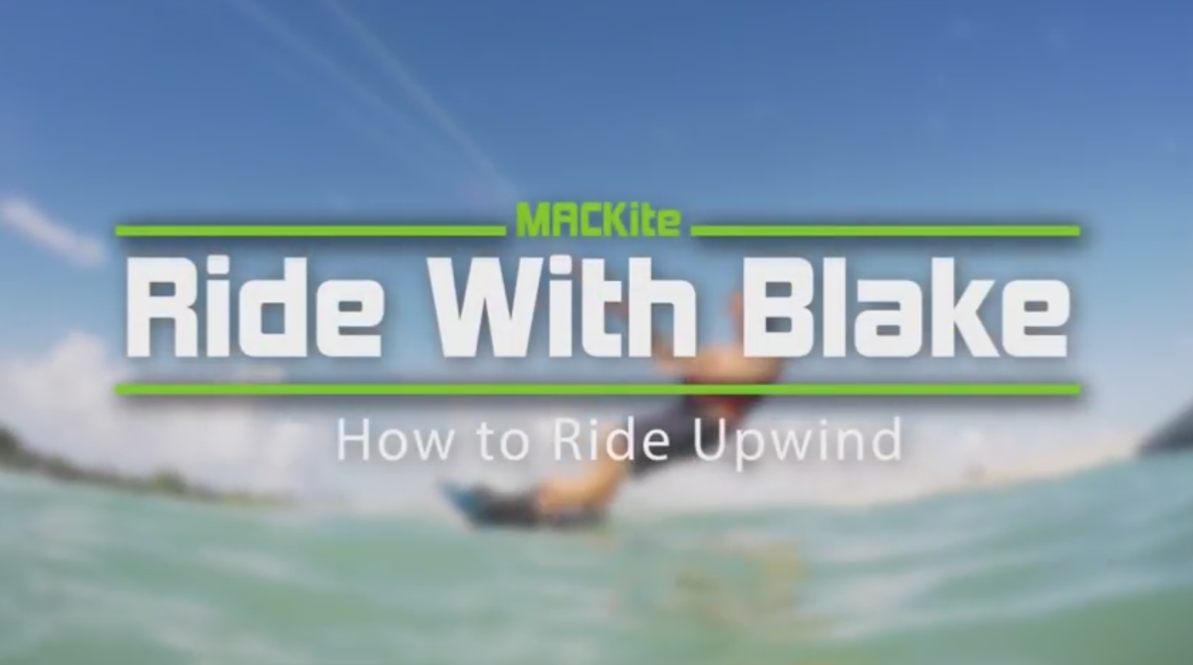Ride with Blake | How to Ride Your Kiteboard Upwind
Hey folks! In the latest installment of MACkite’s Ride With Blake series, Blake Olsen chats about how to ride upwind - a critical skill in the learning process of kiteboarding for beginners.
Blake: Today’s lesson is on how to ride upwind. Once you get your first start, you end up going back and forth on the beach and you end up walking back up the beach, and that’s all part of the learning process. Everyone’s got to do it, so don’t worry about the walk of shame - we’ve all been there before. For an easier way around this, I’m going to teach you how to ride upwind in five easy steps.
- Step #1: Building up speed going downwind - this is important to start your tack going upwind. It seems a little counterintuitive to go downwind in order to go upwind, but you can’t just start right off with your kite going and edge the other way - there’s a lot of power on the kite and you’re resisting it, so point your board downwind and send the kite to build up speed.
- Step #2: Sheet out on the bar. Sheeting out opens the kite and gives you full power, pulling it straight downwind. If you’re pulling in on the bar all the way, it’s going to keep pulling you downwind. After you get your speed, sheet out on the kite to open it up, allowing you to ride upwind.
- Step #3: Open up your shoulders and your hips - wherever your hips and shoulders are pointed, your body will follow, just like any other sport. If you’re looking down the hill when you’re skiing, you’re going to go down the hill no matter how hard you try to turn. Same with kiting: if you’re looking at the kite and your shoulders are closed towards the kite, you’re going to ride downwind. The biggest part of riding upwind is opening up and practicing looking away from the kite. This will allow you to ride upwind.
- Step #4: Find objects to look at - boats, palm trees, buildings, you can use whatever as long as it’s a fixed point. Focus on something way upwind of you. This will further open your shoulders to allow you to ride upwind more efficiently. Even though I’m looking far upwind, my board might not go that far upwind - it’s alright, the point is to increase your upwind angle, so you don’t have to go directly towards that object. If my shoulders are closed, no matter how hard I’m looking upwind I’ll still just get taken downwind.
- Step #5: Point your board and lock it in. Once you’re sheeted out, you’ve opened your shoulders & hips, focused on something way upwind of you and you’re riding upwind, just lock your back knee in place and point your front leg to point your board upwind. Have your bar sheeted out while still looking upwind and try to hold your edge so you have a nice straight angle, headed upwind. The big thing is making sure your body position is correct. Take a hand off and start dragging, if you’d like - you’ll go upwind even quicker if you can hold your edge.
Once you get moving and you have some speed in the right wind, you might be cruising slowly but you’ll still be able to get upwind. This is a really big part of kiting, especially because you won’t have to walk upwind on the beach anymore. Practice, practice, practice - you won’t be able to improve if you don’t practice! The best way to do it is a series of laps - start at one point on the beach, tack out and then back in, trying to go further upwind each lap you make. It’s not fun getting stuck far downwind and having to walk back up the beach a ways. It’s a gradual process - make it a little further upwind each time, and then you’ll be kiting on your own! Self-sufficiency will radically redefine your kiting perspective, so just practice until you’re over this first big hump.
These online kiteboarding lessons are a project we’ve begun to educate and inform new kiters and veteran kiters alike - you’re never too experienced to miss out on watching the latest kiteboarding tips and tricks from the pros. Blake is a Key West kiteboarder that hooked up with MACkite a few years back and ever since he’s been helping our riders learn through his online tutorials.
Recent Posts
-
2024 Duotone Slick Wing Review | What's New in This Year's Model?
The Duotone Slick has been a favorite of many for several years. Pros love it for its speed, …15th Apr 2024 -
Lightwind Kiteboarding in Key West with Kristen and RyGo | MACkite x Airush
Kristen and Rygo are headed down to Key West in the RV, where they'll hook up with the cr …15th Apr 2024 -
What's New with F-One Foils? Eagle X and Seven Seas Updates Explained
F-One has released some exciting new options and refinements in their foil lineup. Tucker, R …12th Apr 2024




